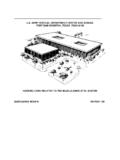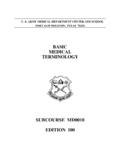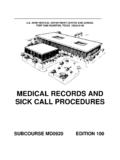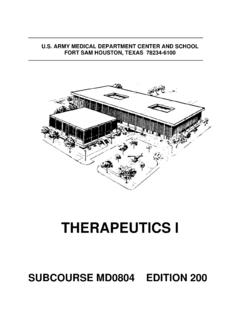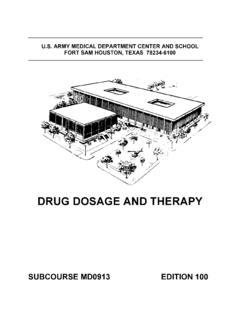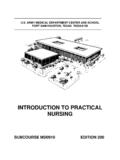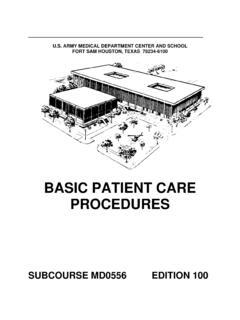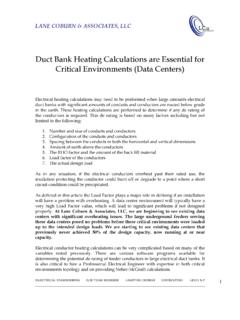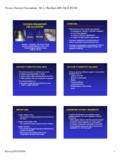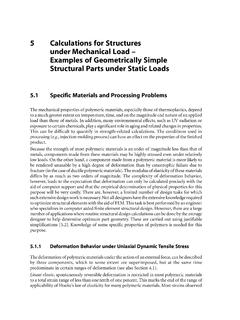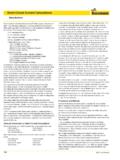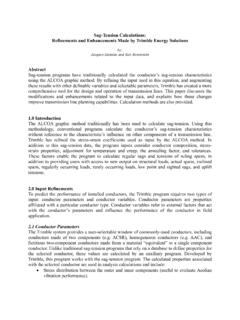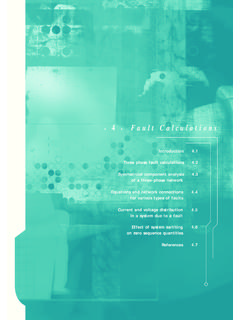Transcription of PHARMACEUTICAL CALCULATIONS - Nursing 411
1 ARMY MEDICAL DEPARTMENT CENTER AND SCHOOL. FORT SAM HOUSTON, TEXAS 78234-6100. PHARMACEUTICAL . CALCULATIONS . SUBCOURSE md0802 EDITION 200. DEVELOPMENT. This subcourse is approved for resident and correspondence course instruction. It reflects the current thought of the Academy of Health Sciences and conforms to printed Department of the Army doctrine as closely as currently possible. Development and progress render such doctrine continuously subject to change. ADMINISTRATION. For comments or questions regarding enrollment, student records, or shipments, contact the Nonresident Instruction Section at DSN 471-5877, commercial (210) 221- 5877, toll-free 1-800-344-2380; fax: 210-221-4012 or DSN 471-4012, e-mail or write to: COMMANDER.
2 AMEDDC&S. ATTN MCCS HSN. 2105 11TH STREET SUITE 4192. FORT SAM HOUSTON TX 78234-5064. Approved students whose enrollments remain in good standing may apply to the Nonresident Instruction Section for subsequent courses by telephone, letter, or e-mail. Be sure your social security number is on all correspondence sent to the Academy of Health Sciences. CLARIFICATION OF TRAINING LITERATURE TERMINOLOGY. When used in this publication, words such as "he," "him," "his," and "men" are intended to include both the masculine and feminine genders, unless specifically stated otherwise or when obvious in context.. USE OF PROPRIETARY NAMES. The initial letters of the names of some products are capitalized in this subcourse. Such names are proprietary names, that is, brand names or trademarks.
3 Proprietary names have been used in this subcourse only to make it a more effective learning aid. The use of any name, proprietary or otherwise, should not be interpreted as an endorsement, deprecation, or criticism of a product; nor should such use be considered to interpret the validity of proprietary rights in a name, whether it is registered or not. TABLE OF CONTENTS. Lesson Paragraphs INTRODUCTION. 1 PHARMACEUTICAL CALCULATIONS I. Section I. Review of Basic Mathematics ..1-1----1-20. Section II. Temperature Conversions ..1-21--1-24. Section III. Prescription Interpretation..1-25--1-29. Section IV. Ratio and Proportion ..1-30--1-32. Section V. The Metric System ..1-33--1-38. Section VI. Common Systems of Section VII. Reduction and Enlargement of Exercises 2 PHARMACEUTICAL CALCULATIONS II.
4 Section I. Specific Section II. Percentage Preparations ..2-4---2-6. Section III. Dilution of Stock Section IV. Alligation ..2-10-2-13. Exercises 3 PHARMACEUTICAL CALCULATIONS III ..3-1--3-5. Exercises i CORRESPONDENCE COURSE OF. THE ARMY MEDICAL DEPARTMENT CENTER AND SCHOOL. SUBCOURSE md0802 . PHARMACEUTICAL CALCULATIONS . INTRODUCTION. One of the most important areas of study for the pharmacy specialist is PHARMACEUTICAL CALCULATIONS . A person might know a great deal about pharmacology, but if he cannot perform a PHARMACEUTICAL calculation , that knowledge cannot be applied in a practical way. To prepare and dispense medications, you must be capable of performing a variety of PHARMACEUTICAL CALCULATIONS . You must be constantly aware of one fact-an error made in a dosage calculation can harm a patient.
5 The study of this subcourse will help give you the knowledge and skill required to perform many types of dosage CALCULATIONS . This subcourse is designed to focus on the systems of weights and measures commonly used in the pharmacy. Examples in the text include drugs actually dispensed in outpatient pharmacy settings. Learning PHARMACEUTICAL CALCULATIONS is like building a house; one part is dependent on the other and a good firm foundation supports it all. Memorizing the formulas and equivalents, developing a well-rounded knowledge of basic mathematics, and practicing what you are learning (that is, solving practice problems) will help you successfully complete this subcourse. Although not required, it is advisable for you to have completed Subcourse MD0801, Prescription Interpretation, before attempting this subcourse.
6 As you study this subcourse you will notice that practice problems are provided at the end of each section. It is important that you solve these practice problems before you go to the next section. Furthermore, you should complete each practice problem before you attempt to take the final examination. Subcourse Components: This Subcourse consists of 3 lessons. The lessons are: Lesson 1. PHARMACEUTICAL CALCULATIONS I. Lesson 2. PHARMACEUTICAL CALCULATIONS II. Lesson 3. PHARMACEUTICAL CALCULATIONS III. ii Here are some suggestions that may be helpful to you in completing this subcourse: --Read and study each lesson carefully. --Complete the subcourse lesson by lesson. After completing each lesson, work the exercises at the end of the lesson --After completing each set of lesson exercises, compare your answers with those on the solution sheet that follows the exercises.
7 If you have answered an exercise incorrectly, check the reference cited after the answer on the solution sheet to determine why your response was not the correct one. Credit Awarded: Upon successful completion of the examination for this subcourse, you will be awarded 10 credit hours. To receive credit hours, you must be officially enrolled and complete an examination furnished by the Nonresident Instruction Section at Fort Sam Houston, Texas. You can enroll by going to the web site and enrolling under "Self Development" (School Code 555). iii LESSON ASSIGNMENT. LESSON 1 PHARMACEUTICAL CALCULATIONS I. TEXT ASSIGNMENT Paragraphs 1-1 through 1-44. LESSON OBJECTIVES After completing this lesson, you should be able to: 1-1. Perform addition, subtraction, multiplication, and division of whole numbers, fractions, and decimals with 100 percent accuracy.
8 1-2. Convert from degrees Celsius to degrees Fahrenheit and vice versa. 1-3. Convert between the various denominations of each of the basic units of the metric system. 1-4. List the conversion factors for the common systems which are most frequently used in the pharmacy. 1-5. Reduce or enlarge PHARMACEUTICAL formulas as required in the pharmacy. 1-6. Solve PHARMACEUTICAL problems using ratio and proportion and conversion factors. 1-7. Perform PHARMACEUTICAL CALCULATIONS using the metric system. SUGGESTION After studying the assignment, complete the exercises at the end of this lesson. These exercises will help you to achieve the lesson objectives. md0802 1-1. LESSON 1. PHARMACEUTICAL CALCULATIONS I. Section I. REVIEW OF BASIC MATHEMATICS.
9 1-1. INTRODUCTION. a. Basic arithmetic is always involved in some manner in the solving of PHARMACEUTICAL CALCULATIONS . Perfecting basic mathematical functions will help to attain the goal of 100 percent accuracy essential in pharmacy. Because of the need for 100. percent accuracy, no partial credit will be given for setting a problem up correctly if the answer is incorrect. In pharmacy, the correct answer is more important than the method. b. Even if the operations performed in this lesson seem overly simple, do them for practice/review. Most of the mistakes made by students taking this subcourse are mistakes in basic mathematics. 1-2. FRACTIONS. Some drugs have dosages expressed in fractions of a grain. Some CALCULATIONS will involve fractions, and it is important for you to have the ability to perform all mathematical procedures with fractions, whole numbers, and decimals.
10 A. Parts of a Fraction. A fraction consists of two parts. The number above the line is called the NUMERATOR and the number below the line is called the DENOMINATOR. Example: In the fraction 1/2, the "1" is the NUMERATOR and the "2". is the DENOMINATOR. 1 NUMERATOR. 2 DENOMINATOR. b. Practice. Fill in the blanks: (1) What is the numerator in 3/4? _____. (2) What is the numerator in 9/2? _____. (3) What is the denominator in 7/8? _____. (4) What is the denominator in 12/5? _____. md0802 1-2. c. Solutions to Practice. (1) The numerator in 3/4 is 3. (2) The numerator in 9/2 is 9. (3) The denominator in 7/8 is 8. (4) The denominator in 12/5 is 5. 1-3. COMMON DENOMINATORS. a. When fractions have the same number in the denominator, they are said to have COMMON DENOMINATORS.
